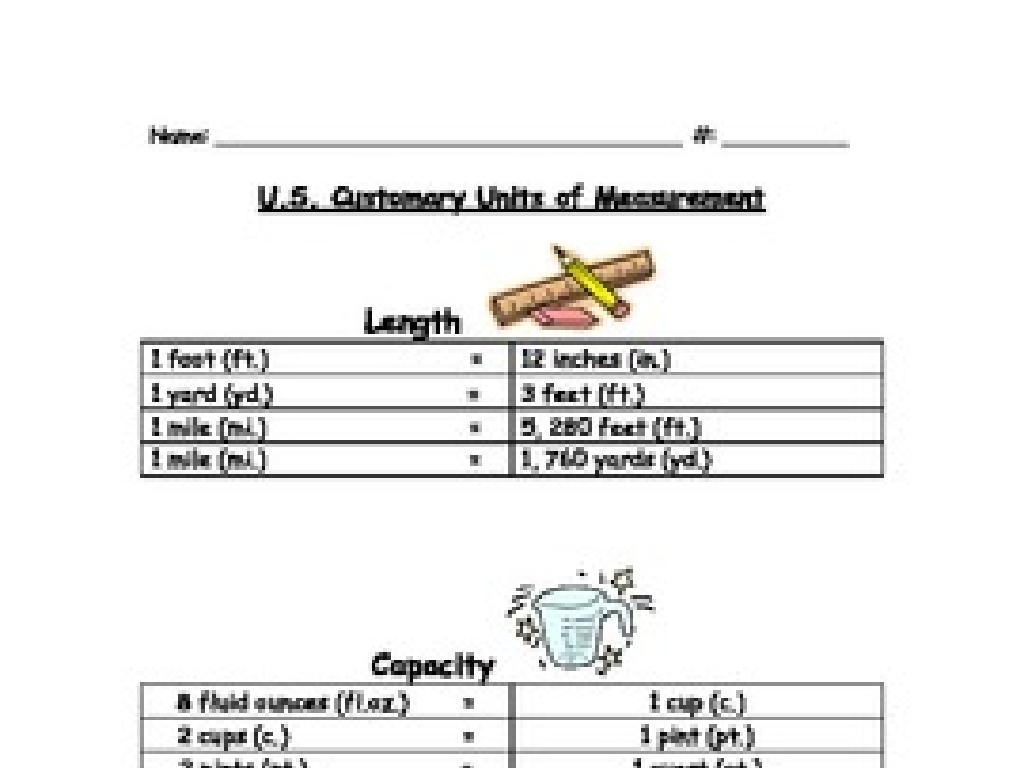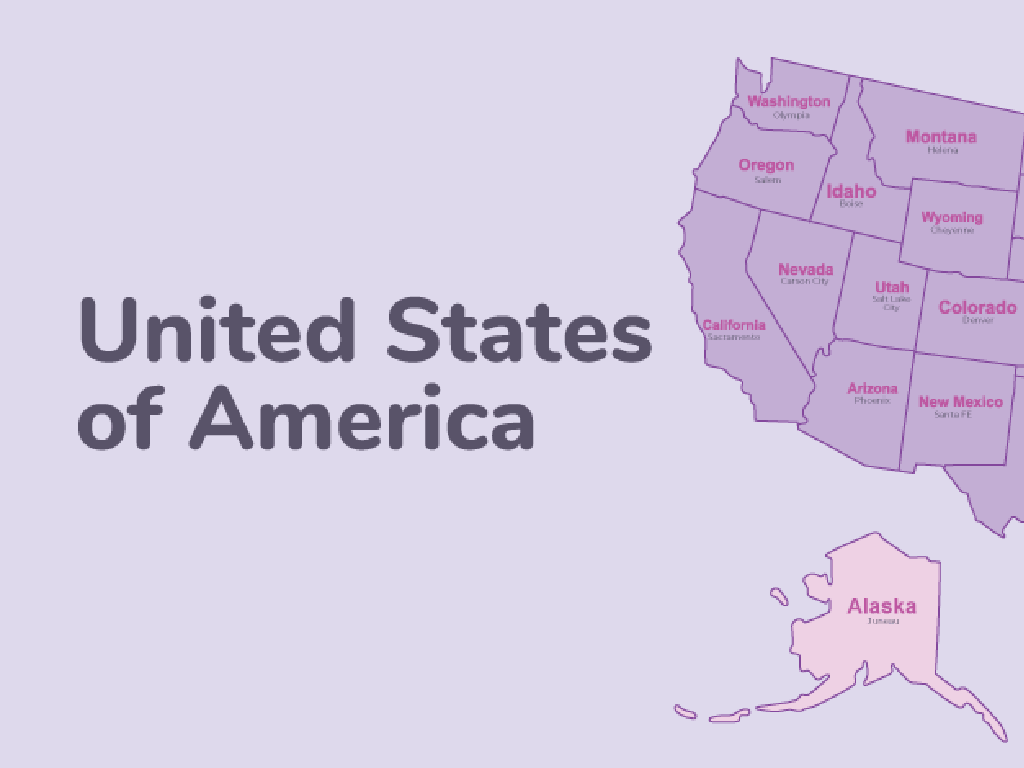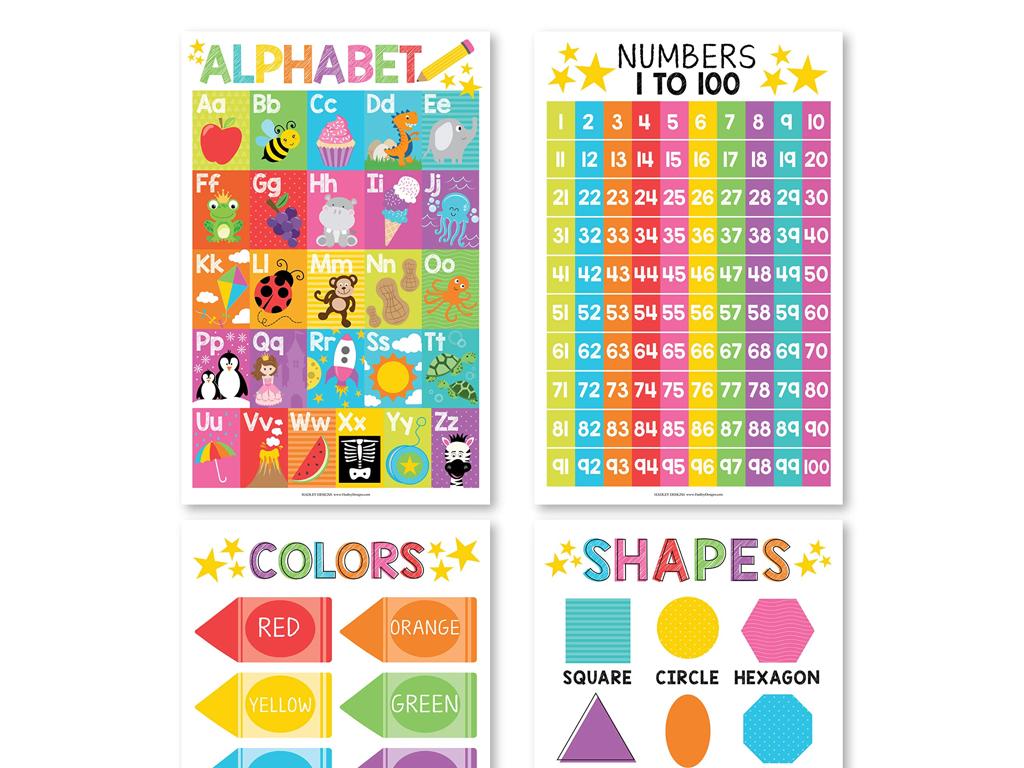Name Countries Of Europe: Region 3
Subject: Social studies
Grade: Eighth grade
Topic: Europe: Geography
Please LOG IN to download the presentation. Access is available to registered users only.
View More Content
Exploring Europe: Region 3
– Europe’s diverse geography
– Countries in Region 3
– Italy, Switzerland, Austria, and more
– Significance of regional study
– Understanding regions helps grasp cultural and political dynamics
– Engage with Region 3’s culture
– Explore languages, cuisines, and histories
|
This slide introduces students to the geographical diversity of Europe, with a focus on Region 3. It’s important to highlight the variety of landscapes, climates, and natural resources found across Europe. For Region 3, students should become familiar with countries such as Italy, Switzerland, and Austria, among others. Emphasize the importance of studying Europe by regions to understand the intricate cultural and political relationships that shape the continent. Encourage students to explore the unique languages, cuisines, and historical backgrounds of the countries in Region 3 to gain a deeper appreciation of Europe’s rich tapestry. This understanding is crucial for a well-rounded global perspective.
Exploring Europe: Region 3
– Locate Region 3 on the map
– Use a map to find Region 3, which includes countries like Italy, Greece, and Croatia.
– Enumerate Region 3 countries
– Italy, Greece, Croatia, Slovenia, and Bosnia and Herzegovina are part of Region 3.
– Cultural diversity in Region 3
– Region 3 is a tapestry of languages, cuisines, and traditions.
– Significance of diversity
– Understanding diversity helps appreciate the region’s rich history and unity in diversity.
|
This slide aims to familiarize students with the geographical area known as Region 3 in Europe, which includes countries like Italy, Greece, Croatia, Slovenia, and Bosnia and Herzegovina. Start by showing Region 3 on a map to give students a visual understanding of its location. Then, list the countries that make up this region. Discuss the cultural diversity, highlighting the different languages, cuisines, and traditions that exist within these countries. Emphasize the importance of cultural diversity in contributing to the rich history and the concept of unity in diversity in Europe. Encourage students to explore more about each country’s unique culture as a part of their learning journey.
Exploring Europe: Region 3’s Geography
– Major landforms of Region 3
– Explore the Alps and Carpathians, shaping the region’s terrain
– Significant rivers and lakes
– Danube River, a vital waterway; Lake Balaton, a tourist attraction
– Climate impact on lifestyle
– Mediterranean climate influences diet, clothing, and activities
– Interaction of geography and culture
|
This slide aims to provide students with an understanding of the physical geography of Europe’s Region 3, which includes the diverse landforms such as the Alps and Carpathian mountains. Emphasize how these landforms can influence human activity and settlement patterns. Discuss the importance of rivers like the Danube in trade and transportation, and lakes such as Balaton for tourism. Highlight how the Mediterranean climate affects the daily life of the inhabitants, influencing their diet (olive oil, wine production), fashion (lighter clothing), and leisure activities (outdoor cafes, beach time). Encourage students to think about how geography can shape cultural identity and lifestyle.
Europe’s Region 3: Political & Cultural Boundaries
– Political borders explained
– Lines defining a state’s territory and its rights
– Cultural vs. political boundaries
– Cultural boundaries are shaped by language, religion, and ethnicity, not just by politics
– Historical impact on current borders
– Wars, treaties, and politics have shaped modern borders
– Case study: Region 3’s map evolution
– Explore how historical events have changed Region 3’s borders over time
|
This slide aims to help students understand the complex nature of political and cultural boundaries within Europe’s Region 3. Begin by explaining what political borders are and how they differ from cultural boundaries, emphasizing that political borders are legal constructs while cultural boundaries are often based on social and ethnic factors. Discuss the historical events that have led to the current political map of Region 3, such as wars, treaties, and political agreements. Use a case study approach to show students how the borders of countries in Region 3 have evolved over time due to these factors. Encourage students to think critically about how history and culture shape the world we live in today.
Exploring Europe: Countries and Capitals of Region 3
– Memorize countries and capitals
– Use flashcards to remember names like ‘Lisbon is to Portugal’
– Discover fun capital facts
– Did you know? Vienna has the world’s oldest zoo
– Learn local languages
– Portuguese in Portugal, Hungarian in Hungary
– Understand currency use
– Euro is common, but Hungary uses Forint
|
This slide aims to help students memorize the countries and capitals of Europe’s Region 3 through engaging methods like flashcards. Highlight fun facts about each capital to make the learning process enjoyable and memorable. For instance, Vienna, the capital of Austria, is home to the world’s oldest zoo, which dates back to 1752. Encourage students to explore the diversity of languages spoken in each country, such as Portuguese in Portugal and Hungarian in Hungary. Discuss the different currencies used, noting that while many countries use the Euro, there are exceptions like Hungary, which uses the Forint. This comprehensive approach not only aids in memorization but also deepens students’ understanding of the cultural and economic aspects of European countries.
Economic Activities in Europe: Region 3
– Agriculture, Industry, and Services
– Region 3’s economy includes farming, manufacturing, and service sectors.
– Significance of Trade and Tourism
– Tourism boosts economy; trade involves exchanging local goods with other regions.
– Economic Challenges
– Challenges include unemployment, economic disparity, and sustainable development.
– Opportunities for Growth
– Opportunities such as green energy, tech innovation, and educational advancements.
|
This slide explores the diverse economic activities within Europe’s Region 3, highlighting the traditional sectors of agriculture, industry, and services. Emphasize the importance of trade and tourism as vital components of the region’s economy, providing both revenue and cultural exchange. Discuss the economic challenges faced by the region, such as unemployment rates and the need for sustainable practices. Finally, delve into the opportunities that exist for economic growth, including the potential for investment in renewable energy, the tech sector, and education. Encourage students to think critically about how these factors interplay and shape the region’s economic landscape.
Cultural Highlights of Europe: Region 3
– Explore regional festivals
– Oktoberfest in Germany, La Tomatina in Spain
– Discover famous landmarks
– Eiffel Tower in France, Colosseum in Italy
– Learn about historical figures
– Napoleon Bonaparte, Leonardo da Vinci
– Understand cultural significance
|
This slide aims to give students a glimpse into the rich cultural tapestry of Europe’s Region 3. Discuss various festivals such as Germany’s Oktoberfest and Spain’s La Tomatina, which are integral to the cultural identity of these countries. Highlight famous landmarks like the Eiffel Tower and the Colosseum, which are not only architectural marvels but also symbols of historical significance. Introduce influential historical figures such as Napoleon Bonaparte of France and Leonardo da Vinci of Italy, explaining their impact on history and culture. Emphasize the importance of understanding these cultural elements to gain a deeper appreciation of the region’s heritage. Encourage students to research more about these topics and possibly share any personal experiences or family heritage related to these cultural highlights.
Class Activity: Exploring Europe’s Region 3
– Divide into groups for countries
– Research & present a Region 3 country
– Focus on geography, culture, and history
– Create a travel brochure
– Include images, fun facts, and must-visit places
– Highlight key facts in your brochure
– Mention language, capital, cuisine, and landmarks
|
This activity is designed to engage students with the geography and culture of Europe’s Region 3. By working in groups, students will collaborate to research a specific country, which will enhance their teamwork and research skills. The travel brochure project will allow them to creatively express what they’ve learned, including the country’s language, capital, cuisine, and important landmarks. Encourage the use of online resources, library books, and multimedia to make their brochures informative and visually appealing. Possible countries for Region 3 could include Italy, Switzerland, Austria, and Slovenia. Ensure each group has access to research materials and guide them on how to summarize key facts effectively. This activity will culminate in a presentation session where each group will share their brochure and what they learned about their country with the class.






